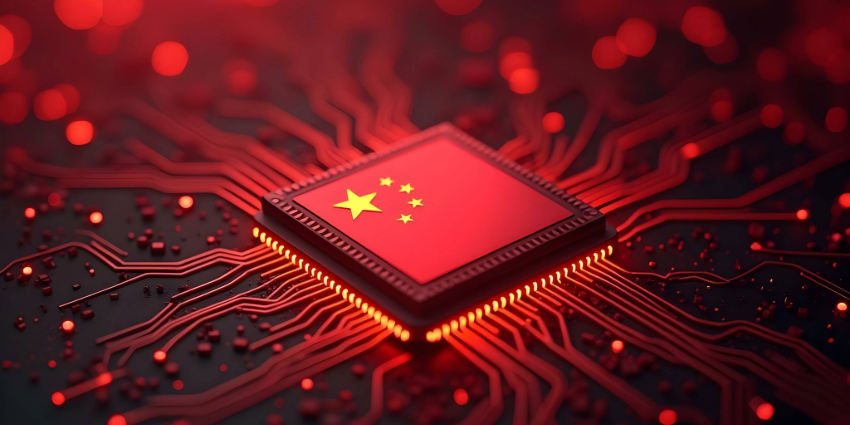As Huawei boldly challenges NVIDIA’s AI chip dominance with homegrown alternatives, President Xi Jinping’s recent call for China to achieve “self-reliance and self-strengthening” in artificial intelligence is becoming reality.
Xi’s proclamation at last week’s Politburo study session wasn’t just political posturing – it’s the latest signal in China’s determined march toward technological – and particularly AI – sovereignty.
The Self-Reliance Strategy
During the high-level meeting, Xi didn’t mince words about China’s technological ambitions:
We must recognize the gaps and redouble our efforts to comprehensively advance technological innovation, industrial development, and AI-empowered applications.
This push comes amid escalating US-China tech tensions. Far from mere rhetoric, Xi’s call for an “independent, controllable, and collaborative artificial intelligence basic software and hardware system” outlines China’s goal: complete AI sovereignty.
Signs of Success
China’s AI landscape shows this strategy might be working.
The country’s AI industry surpassed 700 billion yuan ($96.06 billion) in 2024, maintaining over 20% annual growth for several consecutive years. Other indicators are equally impressive:
- The country has over 250 million generative AI users and 1.1 billion internet users
- Chinese firms hold 60% of global AI-related patents
- 36% of the world’s AI large language models originate from China, second only to the US
- Eight of the top ten global smart robot vacuum cleaner brands are Chinese, with over 60% combined market share
Chinese AI startup DeepSeek has particularly rattled Western assumptions with its January 2025 release of an AI reasoning model developed using less advanced chips at lower costs than Western alternatives.
The Manufacturing Advantage
China’s AI strategy leverages its unmatched manufacturing infrastructure and lower labor costs to create a decisive edge in hardware production.
By integrating AI with its vast manufacturing base, China transforms theoretical research into affordable consumer products at a pace Western competitors struggle to match.
A recent Global Times report highlights this advantage: Chinese brands now occupy eight of the top ten positions in the global smart robot vacuum cleaner market, commanding over 60% combined market share over multiple product categories:
- Smart home devices from Chinese manufacturers are rapidly gaining international market share due to competitive pricing
- Chinese automakers’ collaborations on autonomous driving systems attract significant global industry attention
- AI-powered robots for household and educational use benefit from China’s established electronics supply chains
This manufacturing-AI integration creates a virtuous cycle: consumer adoption generates data for further AI improvement, while established supply chains allow for rapid scaling of new innovations at lower cost points than Western alternatives.
China isn’t just developing theoretical AI capabilities, it’s building a complete ecosystem from chip development to mass-market applications that could fundamentally reshape global tech markets.
The Global AI Race Heats Up
The competition within China itself drives innovation. Shortly after DeepSeek’s breakthrough, Alibaba rushed out its Qwen 2.5-Max model, claiming superior performance.
Now Alibaba has unveiled Qwen 3 with advanced hybrid reasoning capabilities, while search leader Baidu has released its Ernie 4.5 Turbo and reasoning-focused Ernie X1 Turbo models.
Meanwhile, American companies aren’t standing still. On the back of NVIDA’s huge $500bn decision to move its manufacturing to the US, NVIDIA CEO Jensen Huang declared:
The engines of the world’s AI infrastructure are being built in the United States for the first time. Adding American manufacturing helps us better meet the incredible and growing demand for AI chips and supercomputers, strengthens our supply chain and boosts our resiliency.
So Where is the Future of AI Headed?
It’s hard to say, but the stakes of this competition extend far beyond corporate profits. As AI becomes fundamental to national power, technological independence increasingly equals sovereignty.
China’s approach focuses on both the high-end research and mass-market applications, creating a complete industrial chain. This dual strategy means China could potentially build AI systems free from US influence while simultaneously capturing global consumer markets.
The US response emphasizes securing critical supply chains, with domestic manufacturing becoming as vital to national security as traditional defense industries. Both nations now view AI as essential infrastructure, not just a commercial sector.
For the wider world, this competition could lead to divergent AI ecosystems – one American-led, one Chinese-led – each with different technical standards, ethical frameworks, and geopolitical alignments.
The question remains whether China’s state-directed approach will outpace America’s more market-driven system in the long run.
What’s clear is that AI independence has become a central pillar of China’s national strategy – and early signs suggest it’s making progress.








